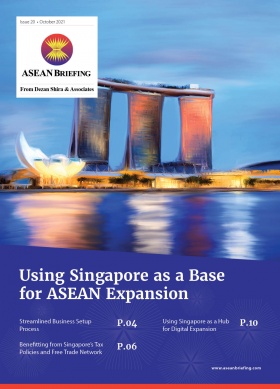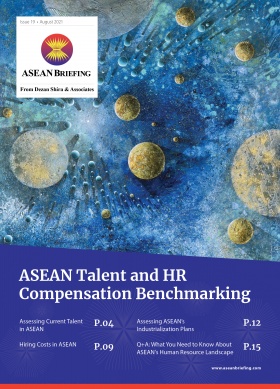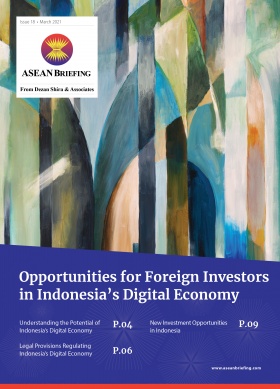Cambodia to Establish Sihanoukville Multi-Purpose SEZ
The Cambodian government is working to transform Sihanoukville province, also known as Preah Sihanouk province, into a multi-purpose special economic zone (SEZ) after the province received the designation earlier this year.
On June 9, 2021, Cambodian Prime Minister Hun Sen signed a sub-decree that will make Sihanoukville province a multi-purpose SEZ. The designation stands to give Sihanoukville province more latitude in structuring development initiatives and investment incentives into a wider array of areas.
Sihanoukville province’s capital city of the same name is one of Cambodia’s most important economic drivers, thanks in large part to the trade, logistics, and tourism sectors. The Sihanoukville SEZ is already Cambodia’s largest SEZ, contributing to the city’s emergence as an economic force alongside the capital city, Phnom Penh, and the second-largest city, Siem Reap.Sihanoukville province’s new status as a multi-purpose SEZ reflects the Cambodian government’s ambitions to further develop the province and capital city into a major player for export-driven manufacturing and trade. With greater investments in infrastructure and incentives, Sihanoukville stands to become one of the most attractive locations for foreign investment into Cambodia.
Establishing a multi-purpose SEZ in the Shenzhen model
In October, Cambodia’s Ministry of Economy and Finance entered into a consultancy contract with the Urban Planning and Design Institute of Shenzhen, China to lead Sihanoukville province’s transformation into a multi-purpose SEZ. As part of this contract, the Shenzhen-based institute will develop a master plan for the multi-purpose SEZ’s development vision and direction within the context of Cambodia’s wider political, economic, and social goals.
The multi-purpose SEZ carries an explicit goal of turning Sihanoukville city into a “second Shenzhen city”, which is why the Cambodian government sought expertise from the Chinese city. Shenzhen is the most successful example of a Chinese SEZ, as its designation helped transform it from a small fishing hamlet to a manufacturing powerhouse to a high-tech innovator. Cambodia’s economic planners hope that Sihanoukville city can likewise develop from a relatively small coastal city into a manufacturing and shipping powerhouse.
The establishment of the multi-purpose SEZ falls into Cambodia’s wider Industrial Development Policy 2015-2025. The government plans for its establishment to take place in four phases: data collection and site survey; assessment and proposal; preparation of master plan; and completion of the master plan project. According to the Phnom Penh Post, the government expects this process to take around 18 months.
Developing industry and infrastructure
Aun Pornmoniroth, Deputy Prime Minister and Minister of Economy and Finance said the goal of the multi-purpose SEZ is to sustainably promote the province’s development potential. In this vein, the multi-purpose SEZ will aim to become a major economic zone in Southeast Asia that is empowered by smart technology, as well as an advanced industrial zone serving regional and global production chains, as reported by the Khmer Times.
Earlier, in August, the Cambodian government established a working group to determine land management and use policy as part of efforts to transform the province into a multi-purpose SEZ. This group will develop a policy that aims to promote relevant economic sectors.
Land management and use policy are important for SEZs because SEZs in Cambodia tend to involve significant physical infrastructure development projects. Currently, Sihanoukville province is building 34 new roads and expanding its port and airport, along with the Phnom Penh-Sihanoukville Expressway.
Additionally, the multi-purpose SEZ may designate additional areas for industrial investments. As of May 2020, about 20 companies above a size threshold had developed projects on 11,647 hectares of land in the province, worth a total of US$3.9 billion.
Expanding the Sihanoukville Port
The decision to upgrade Preah Sihanouk into a multi-purpose SEZ comes alongside other efforts to further develop the Sihanoukville Autonomous Port.
The Sihanoukville Autonomous Port, which is the country’s only deep seaport, is by far Cambodia’s largest port, with about 80 percent of all Cambodian exports passing through it. Through the first eight months of 2021, the Sihanoukville SEZ had US$1.57 billion in import and export value passing through, a 41 percent increase from the previous year.
Expansion plans will see the port build an entirely new container port that will be 350 meters long and have 14.5 meters in-depth, which will be able to dock large ships with 5,000 TEU container capacities. Construction for the new pork is set to begin in early 2022 and be completed by the end of 2024, according to the Phnom Penh Post.
In addition to building physical infrastructure, officials are studying ways to make the port more efficient and business-friendly. Currently, the Cambodian government is analyzing operational activities such as licenses, certificates, permits, and on-site applications for import and export, with an eye to making these processes more streamlined.
Stimulating Cambodia’s pandemic recovery
The development of the Sihanoukville multi-purpose SEZ is poised to play a key role in Cambodia’s recovery from the economic effects of the COVID-19 pandemic. While the pandemic hit numerous sectors of the Cambodian economy, the downturn was especially significant in non-SEZ areas.
According to a report by the Ministry of Economy and Finance, the Council for the Development of Cambodia only approved 75 private investment projects outsides of SEZs in the first eight months of 2021, a 30 percent decrease from the same period a year earlier. Further, new investments in non-SEZ projects in the first months of the year were valued at US$1.1 billion and expected to create 57,000 jobs, representing year-on-year decreases of 52.5 percent and 32.3 percent, respectively.
The lagging performance of investments in non-SEZ areas reinforces the need for the government to further expand and develop SEZs in order to stimulate the economy and share the benefits of growth countrywide. Given the strengths of Sihanoukville, foreign investors in the multi-purpose SEZ may find strong opportunities in export-driven manufacturing, such as in garments and household products, logistics, and tourism.
About Us
ASEAN Briefing is produced by Dezan Shira & Associates. The firm assists foreign investors throughout Asia and maintains offices throughout ASEAN, including in Singapore, Hanoi, Ho Chi Minh City, and Da Nang in Vietnam, Munich, and Esen in Germany, Boston, and Salt Lake City in the United States, Milan, Conegliano, and Udine in Italy, in addition to Jakarta, and Batam in Indonesia. We also have partner firms in Malaysia, Bangladesh, the Philippines, and Thailand as well as our practices in China and India. Please contact us at asia@dezshira.com or visit our website at www.dezshira.com.







